Personally, I find the decryption graphics very helpful for such kind of questions. From the Wikipedia (public domain image):

Now let's add some corruption:

The red dots represent partial corrupted inputs, while the solid red line represents complete block corruption.
Some notation before we start: I'll number the original plaintext blocks as p1 through p3, the corrupted ones as p1' through p3', the correct ciphertext blocks as c1 through c3 and the corrupted ones as c1' through c3':
3231343336353837 3231343336353837 3231343336353837 • • •
p1 p2 p3
ef7c4bb2b4ce6f3b f6266e3a97af0e2c 746ab9a6308f4256 • • •
c1 c2 c3
ef7c4cb2b4ce6f3b f6266e3a97af0e2c 746ab9a6308f4256 • • •
c1' c2'=c3 c3'=c3
efca61e19f4836f1 3231333336353837 3231343336353837 • • •
p1' p2' p3'=p3
There is also some IV that you have not given in your example.
Let's take a look at the first block: Three bits in the input of the block cipher are changed (0x4b ^ 0x4c = 0x07 = 4+2+1). As a block cipher is designed to be a pseudo random permutation - that is a bijective function being indistinguishable from a random function (without knowledge of the key k) - we get a completely (pseudo) random block as output of the decryption function:
dec( c1 ,k) = p1 XOR IV
<=> dec(ef7c4bb2b4ce6f3b,k) = 3231343336353837 XOR IV
dec( c1' ,k) = p1' XOR IV
<=> dec(ef7c4cb2b4ce6f3b,k) = efca61e19f4836f1 XOR IV
As a next step the IV is XORed, so we end up with
dec( c1 ,k) XOR IV = p1
<=> dec(ef7c4bb2b4ce6f3b,k) XOR IV = 3231343336353837
dec( c1' ,k) XOR IV = p1'
<=> dec(ef7c4cb2b4ce6f3b,k) XOR IV = efca61e19f4836f1
which shows that the whole block was destroyed (complete red block at the bottom).
Now, on to the second block: We start again by decrypting the ciphertext block, which works fine as no corruption has occurred in the block:
dec( c2 ,k) = p2 XOR c1
<=> dec(f6266e3a97af0e2c,k) = 3231343336353837 XOR ef7c4bb2b4ce6f3b
^
Notice that this formula uses non-corrupted blocks everywhere. As a reminder, this block was generated like this during encryption:
c2 = enc( p2 XOR c1 ,k)
<=> f6266e3a97af0e2c = enc(3231343336353837 XOR ef7c4bb2b4ce6f3b,k)
The next step is again the application of the XOR with the previous block (this time not the IV, but c1'). This previous block c1' is corrupted:
dec( c2 ,k) XOR c1' = p2 XOR c1 XOR c1'
<=> dec(f6266e3a97af0e2c,k) XOR ef7c4cb2b4ce6f3b = 3231343336353837 XOR ef7c4bb2b4ce6f3b XOR ef7c4cb2b4ce6f3b
Now we can actually calculate c1 XOR c1' (the error) as c1 XOR c1' = 0000007000000000 and replace that everywhere:
dec( c2 ,k) XOR c1' = p2 XOR 0000007000000000
<=> dec(f6266e3a97af0e2c,k) XOR ef7c4cb2b4ce6f3b = 3231343336353837 XOR 0000007000000000
And at last simplify p2 XOR 0000007000000000 = p2':
dec( c2 ,k) XOR c1' = p2'
<=> dec(f6266e3a97af0e2c,k) XOR ef7c4cb2b4ce6f3b = 3231333336353837
You see that the original corruption (0x07) to the first ciphertext block c1' is transferred verbatim to the the second plaintext block p2', but it remains otherwise intact (as is visualized by a mostly white block in the graphic, with a single square being red). This peculiar property of CBC can lead to attacks against real world systems, like padding oracle attacks.
The third block is boring as hell: No inputs to the decryption and XOR have changed, thus p1=p1' and everything is fine there.

